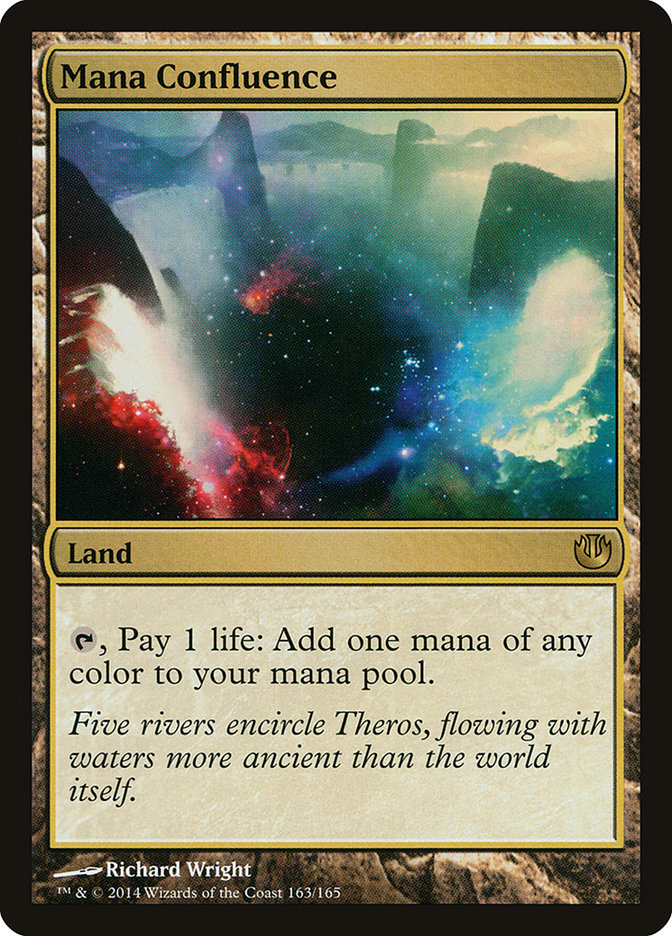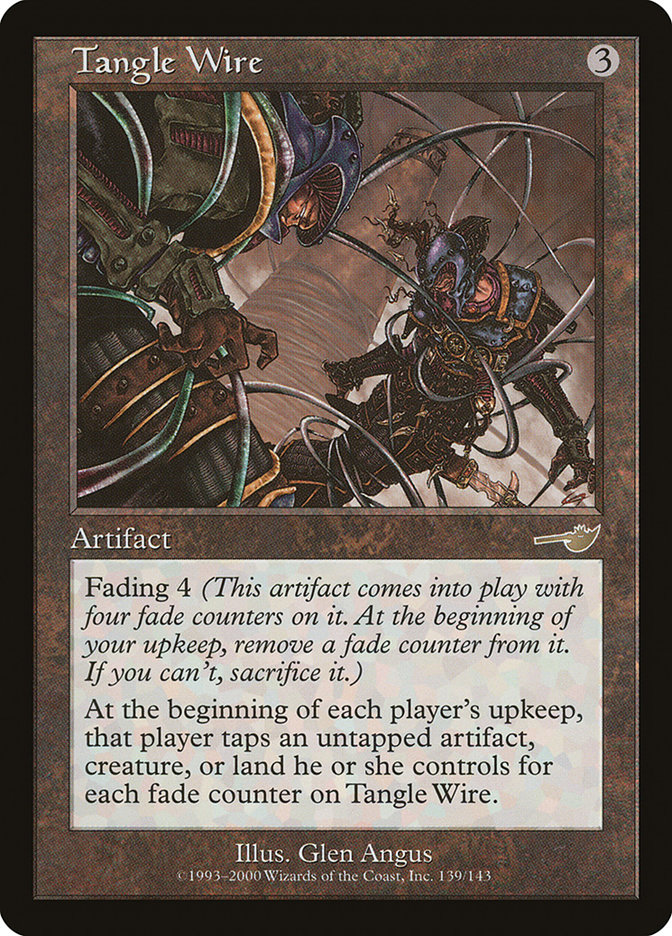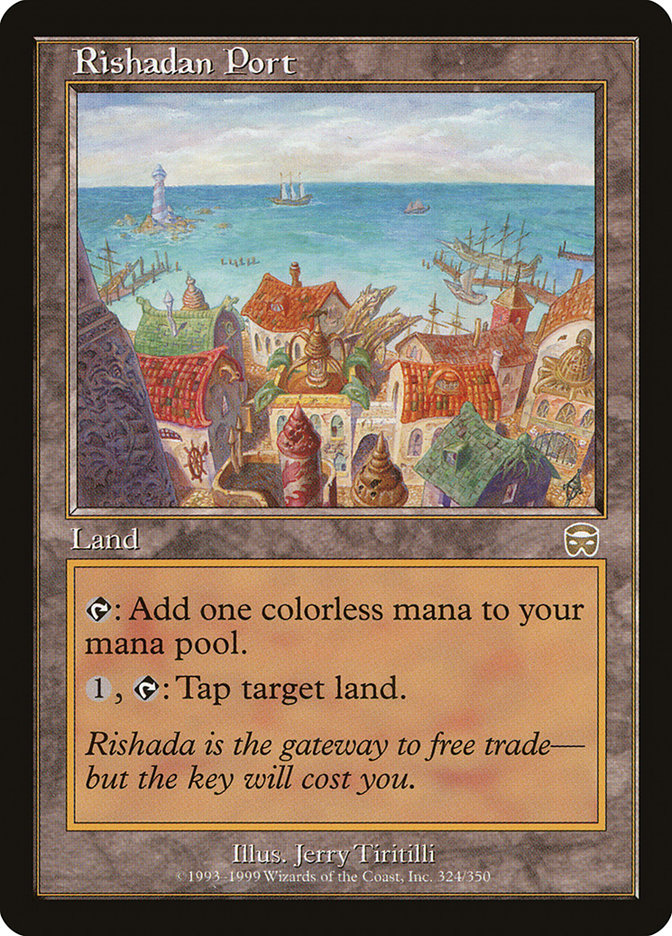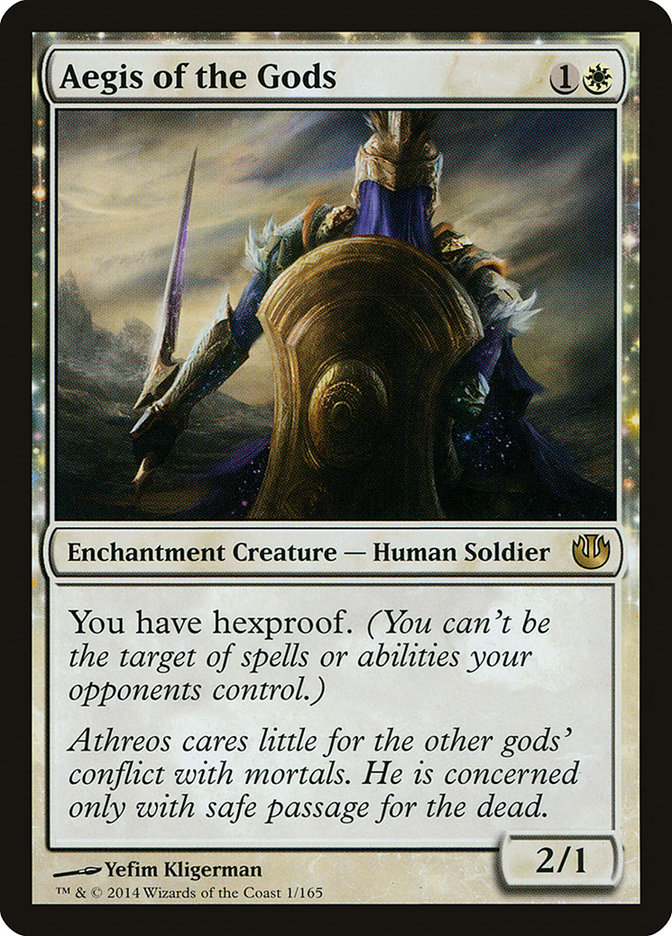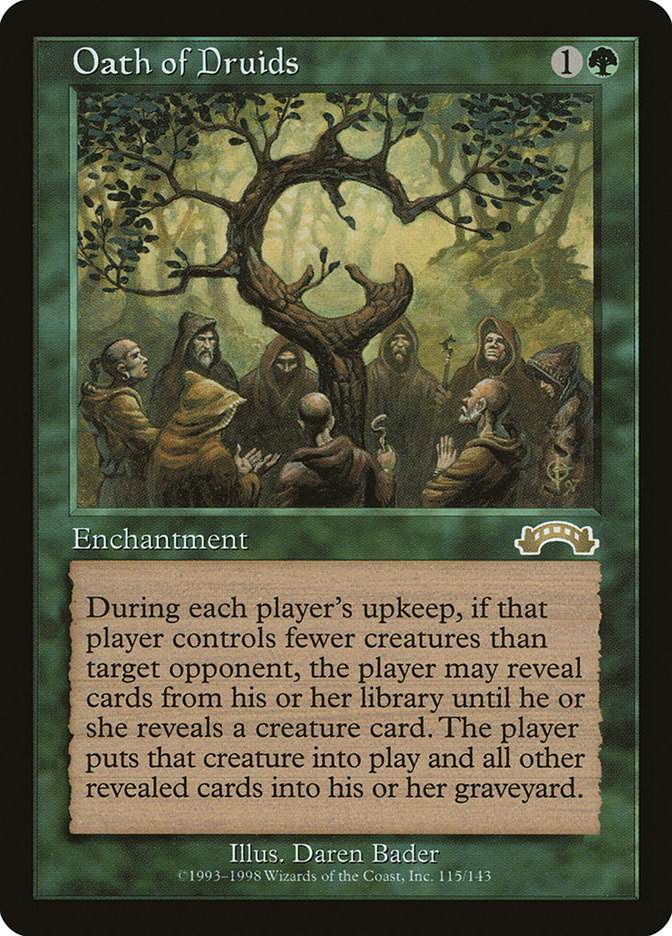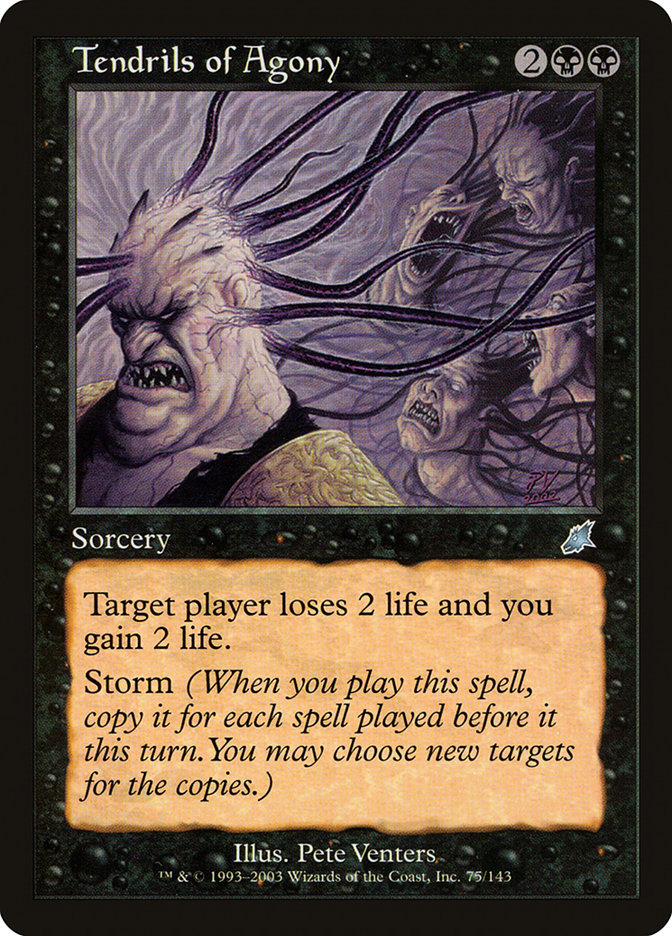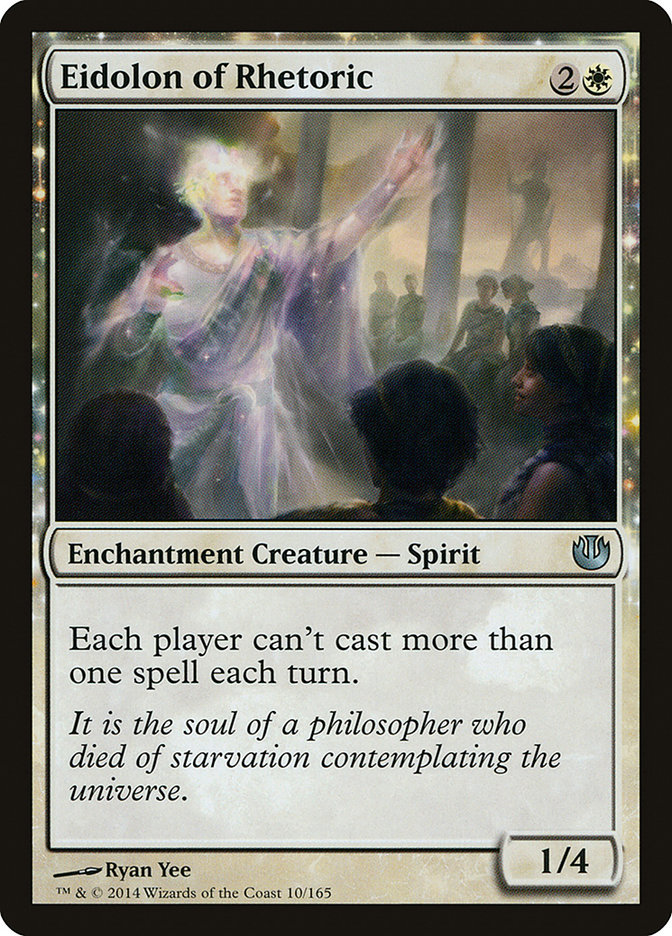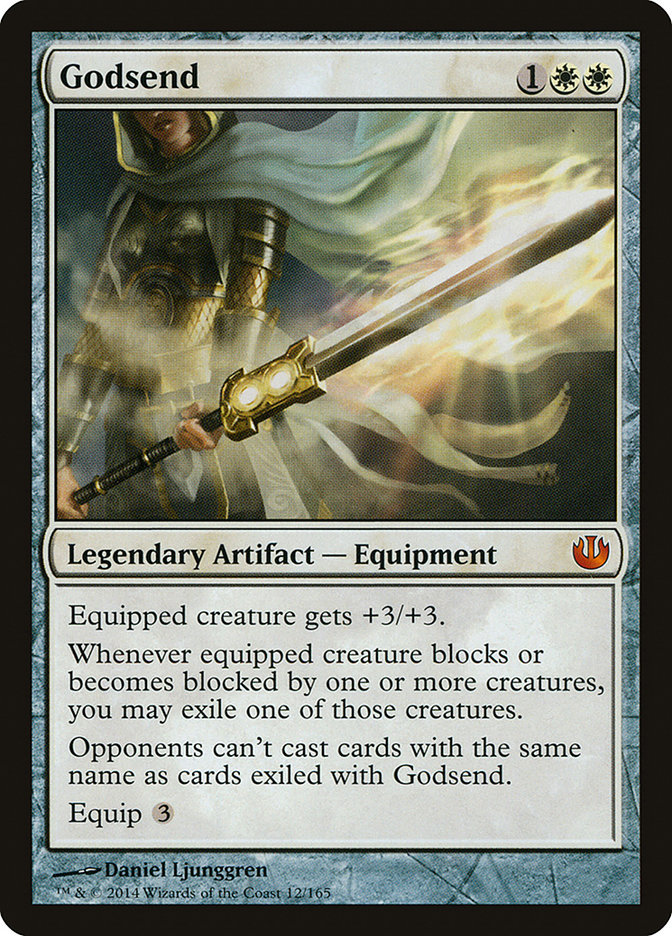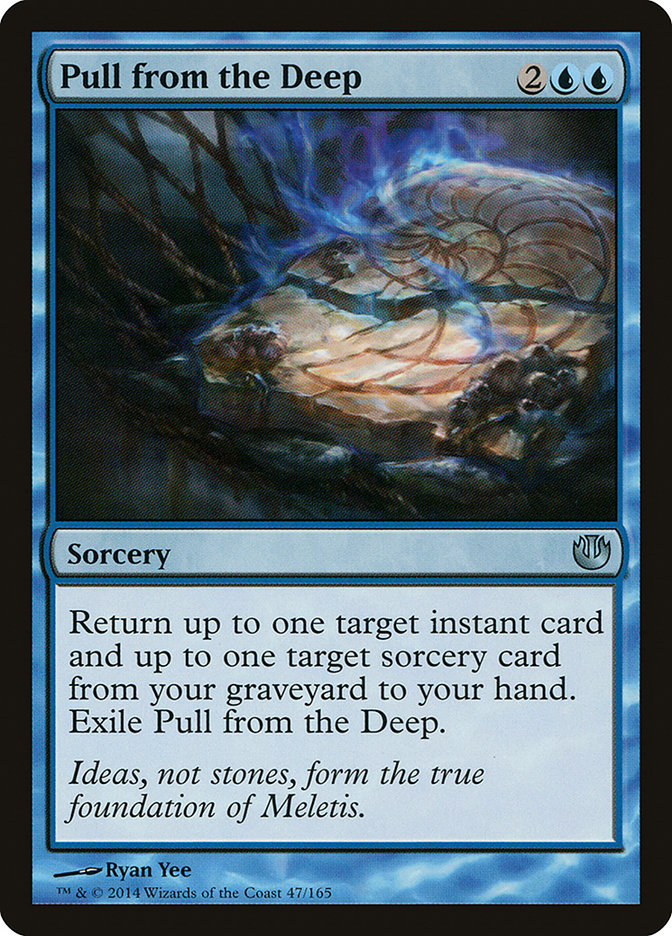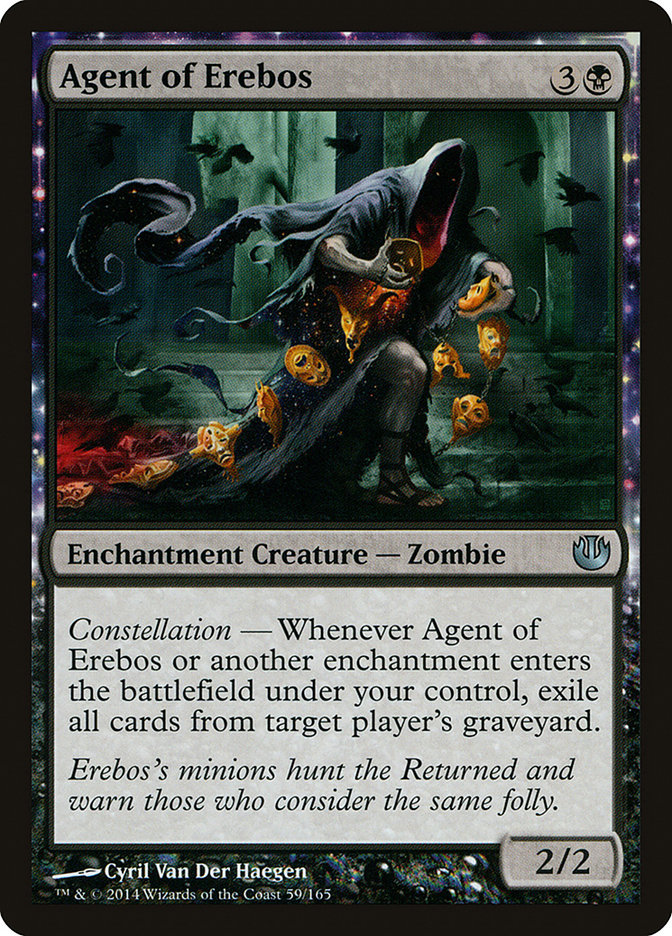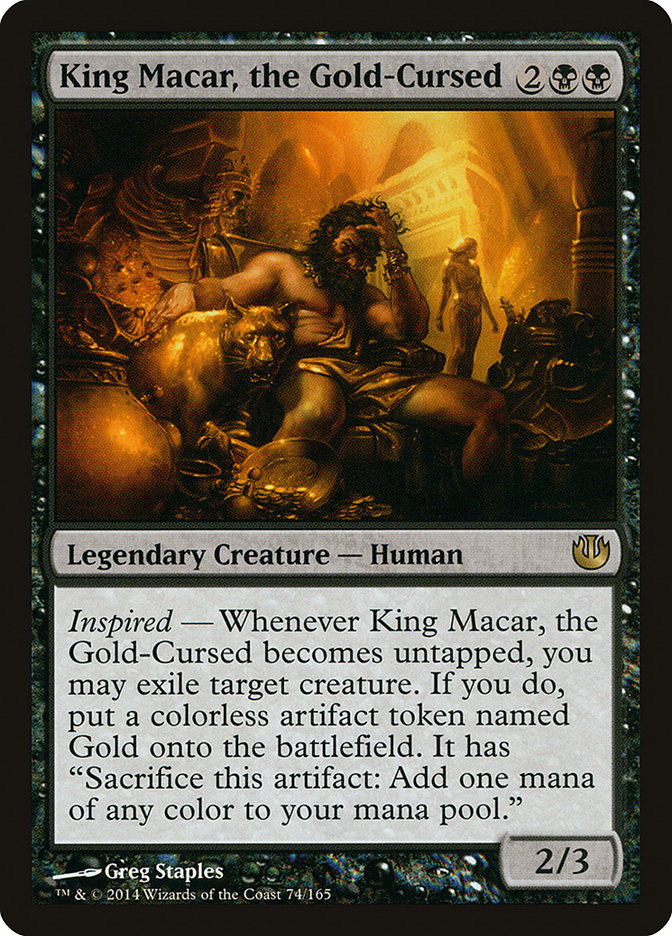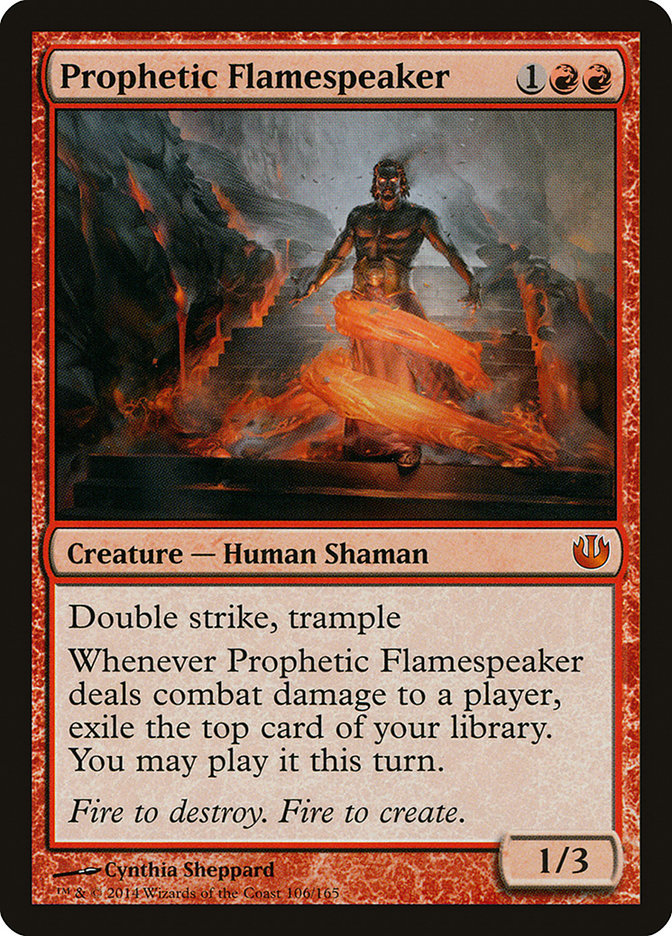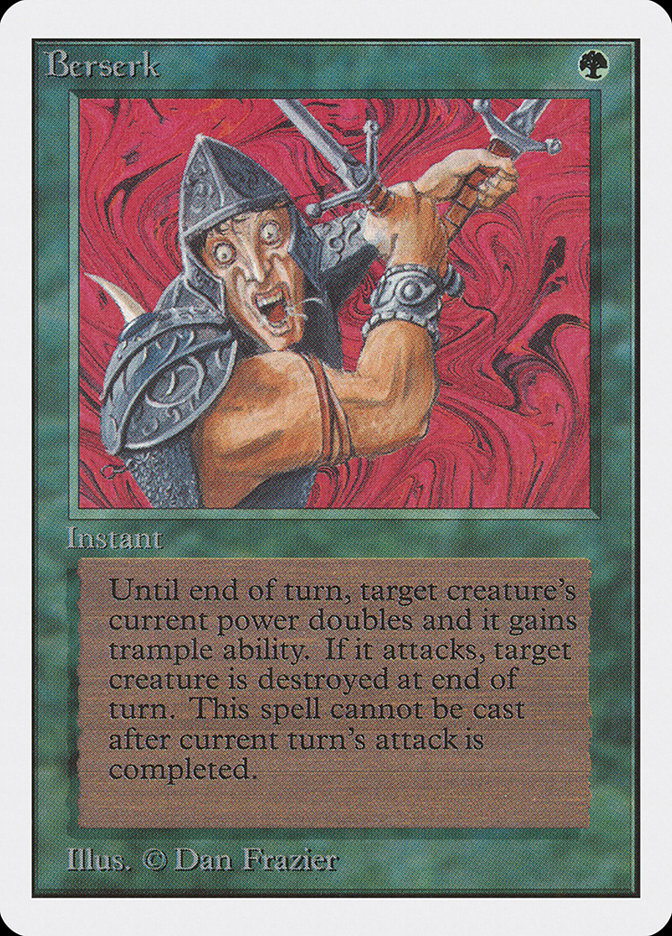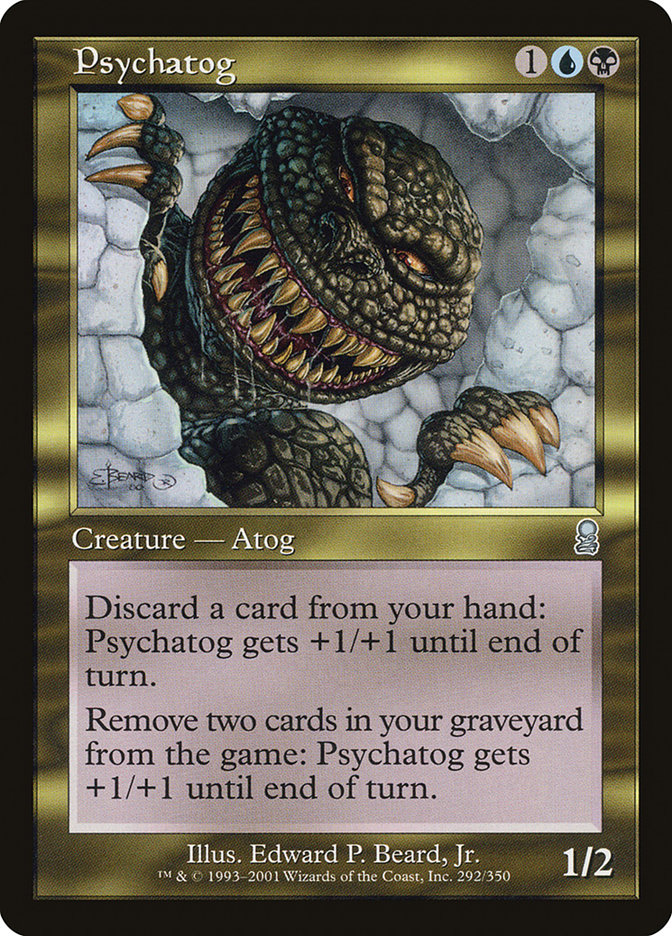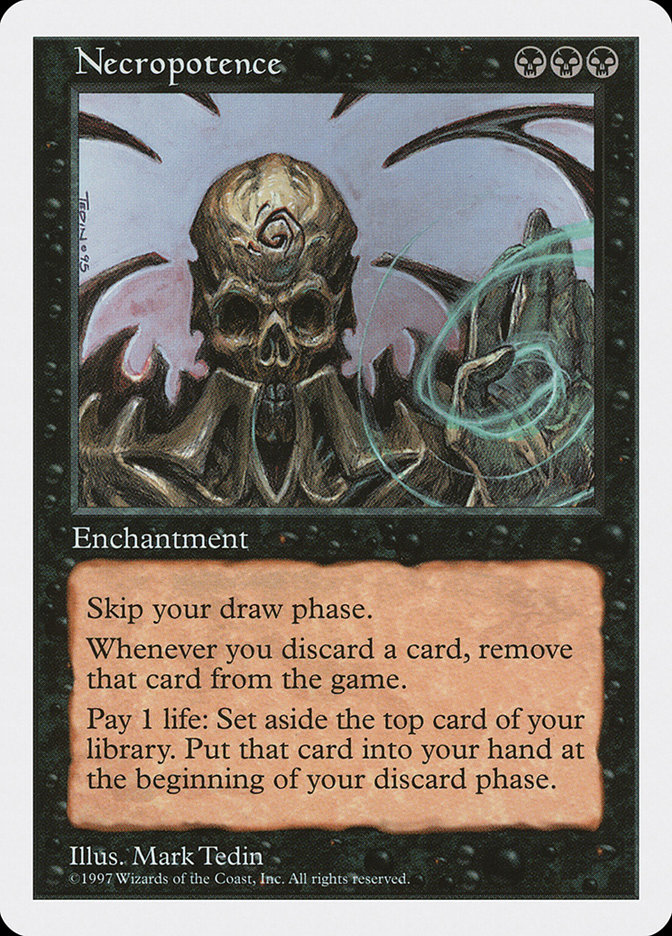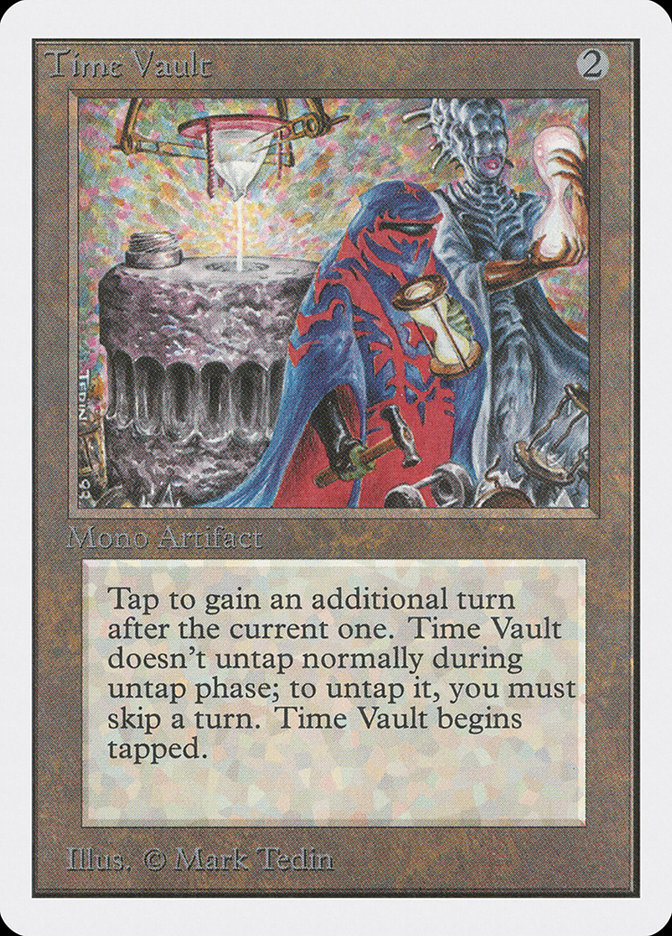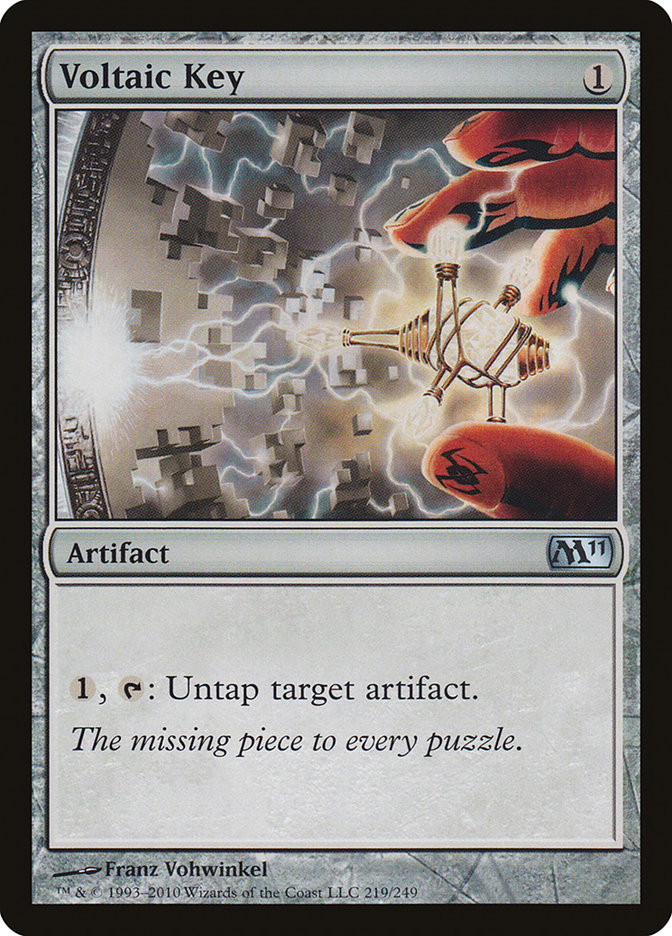Hello there, Vintage fans! Winter is finally over, and the end of that long cold season couldn’t have come sooner if you ask me. My home state of Michigan broke pretty much every all-time record with regard to cold and snow, and a little sunshine and Tigers baseball are a welcome change of climate here in the mitten.
Another mainstay of spring for every longtime Magic player is the release of the third installation of the current block, and in this case the final chapter of Theros block, Journey into Nyx, looks to be a fun and exciting set for Magic fans of every format. Today I’ll be looking at the set specifically for cards that are likely to make a splash in Magic’s oldest format: Vintage.
While change usually takes place at a snail’s pace in Vintage because every new playable has to compete against every single other printed card for slots in people’s 75-card decklists (including Black Lotus and Ancestral Recall!), new cards do show up and do make an impact on the format. Therefore I will be evaluating the cards from Journey into Nyx that I think are the most likely to find a home alongside the best cards ever printed in the best format that has ever existed.
Lands
Let’s start things off with the most obvious card from Journey into Nyx that will for sure see tons of play in Vintage for months and years to come:
An upgraded version of an already heavily played staple? Seems like a safe bet Vintage players will be using this land.
City of Brass is already a card that has seen tons of play in Vintage, dating back to the early days of the format when it was still called Type 1. A land that can make any color of mana and comes into play untapped is at an absolute premium in Vintage, where players scrounge to pull together a mana base that can support as many powerful cards as possible.
The big difference and advantage of Mana Confluence over City of Brass is that whenever City of Brass becomes tapped it deals a damage to its controller, whereas Mana Confluence will only injure its controller when mana is drawn from it. I know that this seems like a subtle difference, but it comes up a lot in Vintage and is a very real and very relevant upside for Mana Confluence.
I can say from experience as a player who has played his fair share of four-color control decks and five-color combo decks in Vintage that there are games I lost in the past because of City of Brass that I could have won had Mana Confluence been in my deck instead of the old mainstay.
Burning out a City of Brass player.
When you are playing a multicolored control deck and have two copies City of Brass in play and a Workshop player slams a Tangle Wire to tap you down for a couple of turns, the damage adds up, and it adds up fast. You can find yourself in the precarious position where a Tangle Wire is not only buying the Workshop player time but will also end up eating away a third to a half of the City of Brass player’s hit points.
Not anymore!
Mages who were happy to jam City of Brass in the past will be very excited to switch their Cities over to Confluences in Vintage from here on out, and those decks will be straight-up better for the addition of this powerful land.
Another way that Mana Confluence will end up impacting Vintage in the long run is that multicolored decks that wanted to play eight copies of City of Brass now have that option without dipping into worse versions like Gemstone Mine. So any deck that wanted to start its mana base with eight copies of City of Brass now has that option.
There are a lot of decks that are likely to utilize this fantastic land. Look to see this card make an appearance in five-color combo decks like Long.dec and Steel City Vault, multicolored Mana Drain control decks, and multicolored aggro creature decks. Basically, any deck that is looking to produce more than three colors of mana will be strongly incentivized to play with Mana Confluence as an upgrade to the five-color lands they are already playing.
White
Can’t touch this.
Aegis of the Gods is another “upgrade” of a preexisting Vintage playable: True Believer.
Although it gives up one point of toughness, Aegis of the Gods more than makes up for it by being much easier to cast and having a notably better ability. 1W is much easier to actually cast off a random Mox or Sol Ring than WW, which will often require two land drops’ worth of mana to deploy. Also, giving a player hexproof is much more valuable than granting shroud. With an Aegis of the Gods in play, a player will still be able to do useful “target myself” effects like Ancestral Recall while ignoring all of the things the opponent might want to do.
Why is granting hexproof to a player in Vintage something worth doing? Let me count the ways:
I do not have a bullseye on my back with an Aegis in play!
There are plenty of cards and effects that target a player, and being able to turn them all off as long as Aegis of the Gods is in play seems like a pretty huge boon. I also love the way that the Aegis of the Gods turns off opposing Oath of Druids and Tendrils of Agony combo decks, which are strategies that beatdown decks tend to be vulnerable to in the first place.
Another thing to keep in mind with an Aegis of the Gods in play is that opposing players will not be able to kill your planeswalkers with burn spells like Lightning Bolt as long as Aegis is in play. Remember that when a player casts Lightning Bolt targeting Jace, the Mind Sculptor, what they are technically doing is casting Lightning Bolt targeting Jace’s controller and redirecting the damage to Jace.
Granted in many of these situations an opponent would just be able to Lightning Bolt the Aegis of the Gods, but think about this. You play Jace, the Mind Sculptor and use it to Brainstorm, and on your end step some unsuspecting opponent tries to Lightning Bolt you and redirect it to Jace. In response, you Aether Vial in Aegis of the Gods to counter the Lightning Bolt by granting yourself hexproof!
True Believer was already a card that people often wanted to play with (and sometimes did play with despite its cumbersome mana cost and inferior ability), so my thinking is that by making this effect better and much easier to cast that Aegis of the Gods will be a card that makes an impact in Vintage for years to come.
Aside from being an all-around solid card that stacks up nicely in Vintage, Aegis of the Gods also has a good creature type since it’s a Human. There’s already a multicolored Human aggro deck that has had a fair deal of success in Vintage, and I expect some mages to try out this critter in that type of deck. Making Aegis of the Gods uncounterable via Cavern of Souls and boosting its power and toughness via Mayor of Avabruck obviously makes the card an even more potent threat.
Creatures (22)
- 4 Dark Confidant
- 4 Noble Hierarch
- 4 Mayor of Avabruck
- 3 Thalia, Guardian of Thraben
- 4 Deathrite Shaman
- 3 Aegis of the Gods
Lands (19)
Spells (19)

Junk Humans seems like a pretty sweet deck to me, and I really like the way that Aegis of the Gods fits in as a catchall to deal with many of the effects that an aggro deck might struggle with or find itself just dead against from combo decks. Note that this is one of many decks that will take advantage of adding four copies Mana Confluence to its mana base as well.
The fact that Aegis of the Gods has utility in most matchups and is extremely relevant against powerhouse cards like Oath of Druids and Tendrils of Agony creates a real niche where this two-mana creature ought to be able to shine in Vintage hate bear decks, aggro-control decks, and multicolored Human decks.
Did you want a 1/4 Rule of Law?
I don’t see this creature being a huge player in Vintage but it could be something that people play around with moving forward. Rule of Law already exists as a 2W Storm Combo hoser, and I fear that this while still being an enchantment is just a more vulnerable version of Rule of Law since it is capable of being killed by spells that also kill creatures (such as Doom Blade, Terminate, and Diabolic Edict).
Still, mages who want their hate cards to attack for damage might find some value in this Spirit. It is also relevant that if you are playing a Spirit tribal deck, Eidolon of Rhetoric will be made uncounterable by Cavern of Souls, which is pretty nifty in a pinch. My opinion is that this card is niche playable (if at all) and that I really wish it had another ability to push it into the range of being more competitive with other white hate bears (Spirit of the Labyrinth; Aegis of the Gods; Thalia, Guardian of Thraben) such as flash or perhaps another power.
To be fair a three-mana creature with a “lights out” ability against certain kinds of decks (Storm, Gush, Snapcaster Mage) isn’t terrible, and the four toughness is interesting since it will prevent it from trading with an opposing Lightning Bolt.
My overall analysis is that in order for this card to see any kind of real Vintage play that something needs to see print that will really incentivize players to work within the framework of a Spirit tribal deck.
Will Stoneforge play Godmaker in Vintage?
I haven’t gotten a chance to play with or against this card yet, but any time a new Equipment that appears to be powerful sees print, we as Vintage players need to ask ourselves “would I want to Stoneforge Mystic for this Equipment?”
Godsend is kind of expensive to play and equip, but the Mystic’s ability to put an Equipment into play does ease up some of the casting cost burden on this card. The two things that I really like about this card as a Stoneforge Mystic target are as follows:
- If a player can get it deployed and equipped, it takes away an opposing Blightsteel Colossus as a win condition if left unanswered. If the opponent attacks their Blightsteel Colossus into one of our creatures equipped with a Godsend, we could block and then exile the Colossus before it ever gets a chance to trample over and infect us to death.
- The other thing that is nice is that Godsend is really good against any midrange player hoping to hide behind their True-Name Nemesis. It’s pretty sweet that the Godsending player can choose to exile even the oftentimes untouchable True-Name Nemesis since Godsend doesn’t actually target.
The question is “is that enough to play with this Equipment?” My skeptical side leans toward probably not right now, but it is a card to keep in mind, especially if True-Name Nemesis ever becomes a really popular and widely played Vintage card.
Blue
Is playing this card going too deep? Probably.
I could see a card like this being a powerful tutor target in a Gushbond or Tendrils of Agony style deck. I think there was a time when a card like this would have been a very big Vintage impact player.
The ability to get back Gush plus Regrowth, Merchant Scroll, or Demonic Tutor seems pretty tempting. One of the biggest problems I have had with the modern Gush decks are that without access to four copies of Merchant Scroll, the deck simply doesn’t have a high enough probability of “going off” once it casts the first Gush.
However, being able to get a Pull from the Deep with a Fastbond in play is very likely to win the game on the spot, granted you have some fuel to get the engine started already set up in the graveyard.
Some other powerful things to think about are that Pull from the Deep can buy back all sorts of other powerful spells: Ancestral plus Thoughtseize, Force of Will plus Demonic Tutor, Mana Drain plus Time Walk. The combinations are pretty much endless.
I would also watch for Pull from the Deep to become a potentially more abusable one-of if Gifts Ungiven were ever to get unrestricted. Pull from the Deep seems like an unbelievable spell to put into a Gifts pile since it will likely be able to bring back both of the cards they wanted to force you to bin in the first place!
Black
So I heard u like Dredge hatez?
Agent of Erebos costs a lot of mana, but its ability is pretty potent against a graveyard-centric deck Dredge.
If some kind of Enchantress style deck came about in Vintage, I could certainly see the Agent being a tutor target worth looking into since it turns nearly every card in that deck into a Tormod’s Crypt.
As it stands, it’s probably not the correct time to play with Agent of Erebos at the moment because it costs a hefty four mana. Another thing to keep in mind about the Agent is that it could be a spicy tutor target for a Birthing Pod deck if that strategy ever makes a run at being a Vintage contender.
My thoughts on this card are currently not today but maybe someday.
He’s got the golden touch.
I just look at this card and am like “wow, this card is sweet, but I have no idea what to do with it.”
The ability to simply execute one of your opponent’s creatures every single turn and get a Lotus Petal out of the exchange is pretty enticing.
There are multiple problems with actually trying to make the King go in Vintage. The first one is that any deck that has creatures worth turning to Gold are likely going to be able to block and kill Macar in combat, thus making sure his inspired effect never gets to go off.
Maybe teaming King Macar up with Springleaf Drum would help bring him online in a creature mirror match. Speeding him up (and protecting him) with Lightning Greaves is also an option to ensure he gets rolling.
I always enjoy the challenge of a card like this and trying to find a spot to make it work because cards like this tend to have an extremely high payoff when they come down completely unexpected since they’re capable of simply winning a game all by themselves.
It’s also pretty sweet that by virtue of costing 2BB that the card isn’t vulnerable to Abrupt Decay, which has steadily been on the rise as the premier removal spell in Vintage for the past year and a half.
Red
Super Ophidian?
When I first saw this card, I had to read it twice.
Prophetic Flamespeaker has a ton of great abilities and a very reasonable casting cost, which is a design combo that makes for an enticing card to want to play.
This card is a big-time damage dealer and a great little draw engine since the two cards it reveals leads to the possibility of essentially drawing two extra cards on your turn.
If anything, I see Prophetic Flamespeaker as a card that could be utilized by U/R Delver or by a U/R Control deck to simply attack the opponent from a different direction. In a Delver style U/R deck, the Flamespeaker has a lot of hits that will be immediately castable like Ponder, Gitaxian Probe, Preordain, and Lightning Bolt. The ability of Jace, the Mind Sculptor or to Brainstorm Moxen to the top of one’s library and then play those free spells via the Flamespeaker is quite powerful, as hitting for two and essentially getting a free Divination is pretty sweet value!
As far as a control deck goes, the ability to bring in a card like this when one knows that the opponent is likely boarding out spot removal like Swords to Plowshares also seems like a huge boon. If a card like this simply races and goes unchecked for two or three turns in a row, it will be nearly impossible for an opposing deck to win the game against the overpowering card advantage this wing-a-ling creature is bound to bring to your side of the table.
Sure, it’s a niche card, but like all niche cards it brings a ton of power to the table.
Green
Sorry, fans of the woods—there is not much to report on this front.
Conclusion
For a set that comes from a block where the key mechanics are devotion, heroic, and inspired, Journey into Nyx actually provides the Vintage format with a surprisingly nice cache of neat playables. The last time I saw a Vintage player target their own creature with a spell (a scenario that would trigger heroic), it was a Berserk on a Psychatog, and an additional +1/+1 counter wouldn’t have made much of a difference.
A “heroic” deck in Vintage.
A Vintage “devotion” deck.
An “inspired” deck in Vintage.
So given that the creature combat and creature board presence based mechanics of the block don’t have a ton of application in Vintage, I’m still very impressed by the quantity and quality of Vintage playables that have found their way into Theros block and particularly into Journey into Nyx.
The big players from this set as far as I can tell from the spoiler are going to be Mana Confluence and Aegis of the Gods.
Ready or not, here they come to a proxy tournament near you!
However, in addition to these “no-brainer” Vintage playables, I also have high expectations for some of the role players as well:
A few spicy role players that could be impactful niche cards moving forward.
I would certainly not be shocked if an opponent plays any of these cards against me at a Vintage tournament in the near future and if it’s quite good for that Vintage player!
As always, only time will tell which cards people decide to sleeve up and use to crush their opponents. One thing is for sure—Mana Confluence and Aegis of the Gods will no doubt be Vintage players going forward.

